The Trump administration’s National Defense Strategy identified the “reemergence of long-term, strategic competition” with China and Russia as the foremost threat to U.S. national security. Since then, the term “great-power competition” has become a buzzword among defense officials and foreign policy experts of diverse political backgrounds.
Both the White House and Pentagon insist that the U.S. military needs enhanced capabilities to counter growing threats such as Russian hypersonic missiles and new Chinese warships and submarines. Greater investment in new weapons will “strongly position the U.S. military for great power competition for decades to come,” as then-Acting Secretary of Defense Patrick Shanahan tweeted in May.
Yet, as the Trump administration escalates its hard-power focus, it is systematically eroding the restrictions on hard power that historically have limited the strength of potential great-power challengers. Trump policies have damaged the arms control and nonproliferation agreements that regulate these threats. Now, as we face next week’s termination of the Intermediate-Range Nuclear Forces (INF) Treaty, the administration is generating skepticism about the long respected Comprehensive Test Ban Treaty (CTBT).
A ramp-up in hard-power pursuits
Citing the need to maintain a “competitive edge against Russia and China,” the Trump administration and Republicans in Congress are pushing to increase defense spending, including raising the top line amount of the Fiscal Year 2020 National Defense Authorization Act (NDAA) to $750 billion through amendments funding several new weapons systems, such as new low-yield nuclear warheads for submarines and a nuclear-armed sea-launched cruise missile (SLCM). Trump threatened to veto the bill under consideration in the House because it would allocate a lower amount—a still-whopping $733 billion. The budget deal reached between House Speaker Nancy Pelosi and Treasury Secretary Steve Mnuchin sets the total at $738 billion.
In addition to seeking funds for INF Treaty-noncompliant missiles, the Pentagon said this month it might use $50 million from its FY 2019 budget to prototype a mobile launcher for a Long-Range Hypersonic Weapon. These priorities are one manifestation of the renewed focus on great-power competition and signal a ramped-up focus on hard-power capabilities.
A retreat from arms control
Since President Trump brought in John Bolton as national security advisor, the United States has pulled out of the Joint Comprehensive Plan of Action (JCPOA, also known as the Iran nuclear deal) and suspended its obligations under—and given notice of intent to withdraw from—the INF Treaty with Russia. The U.S. will terminate its obligations under the INF Treaty on August 2.
The administration argued that both agreements limited U.S. deterrence needs in a new age of strategic competition. But in fact, the JCPOA and INF Treaty were effective and inexpensive means of both blunting the threat of a nuclear-aspirant Iran and preventing Russia or China from gaining an advantage through the possession of intermediate-range missiles. Furthermore, both agreements protected our allies in Europe, Asia, and the Middle East—even if Israeli Prime Minister Benjamin Netanyahu opposed the Iran deal. While it was never likely that Russia would return to compliance with the INF Treaty, Washington gained no strategic advantage by killing it.
Another American blow to nuclear peace
There may be a new victim of the Trump administration’s broad assault on nuclear diplomacy: the 1996 CTBT.
Defense Intelligence Agency (DIA) Director Lt. Gen. Robert P. Ashley, Jr. claimed on May 29 that Russia was “probably” violating its nuclear testing moratorium by testing low-yield tactical nuclear weapons. When pressed on the question, he said that Russia only had the capacity to violate the CTBT. Then, the DIA issued a statement concluding that Russia had in fact violated the treaty. But the Comprehensive Nuclear Test Ban Treaty Organization and other monitoring groups did not detect Russian nuclear testing, and the White House, State Department, and Pentagon declined to provide details supporting Ashley’s allegation.
Ashley was doing his job when he warned that Russia might be in violation of the testing moratorium, but an informed guess should not prompt Washington to alter its policies. There is a precedent for handling this type of situation: In 1987, the United States and Soviet Union agreed to the Joint Verification Experiment, in which each side allowed monitors at their test sites in Nevada and Semipalatinsk to measure the yield of a nuclear test. The tests showed that the Soviets were not exceeding the 150-kiloton limit of the Threshold Test Ban Treaty (TTBT), as the United States had believed. Both sides ratified TTBT.
Although the U.S. Senate never ratified CTBT after President Clinton signed it in 1996, the United States has observed the treaty’s ban on all nuclear test explosions for civilian or military purposes. The moratorium has faced domestic resistance in the past—even though the directors of the national nuclear labs and commander of U.S. Strategic Command have annually certified the reliability of the U.S. nuclear arsenal without testing.
Despite a lack of evidence for Ashley’s claim, arms control opponents are publicly questioning U.S. obligations under CTBT. In March, four Republican senators asked Trump to consider “unsigning” the treaty, and following Ashley’s remarks, conservative experts spoke out against the treaty.
A solution to the wrong problem
Abandoning arms control and nonproliferation will not alone thwart the challenges posed by Russia or China, because many of these challenges are non-traditional. While both states certainly threaten U.S. and allied security, the threat also manifests through political interference, economic infiltration, and information warfare—not through hard power. In fact, China recently demonstrated that it is not preparing to wage nuclear war against the United States by reaffirming its policy of no first use of nuclear weapons.
Instead, China is playing a long game against the United States through a sophisticated system of censorship, surveillance, and worldwide economic penetration (including through the Belt and Road Initiative). Meanwhile, Russia endangers U.S. security by weaponizing election interference and information, thereby undermining support for transnational institutions and democratic norms, which are the true bulwarks of American power. Each blow to the process of arms control, itself a hallmark of transnational governance, is a small win for Russia.
Maintaining our edge by preserving arms control
The United States is still the greatest power, and our advantage comes from locking in that power through agreements that manage the proliferation of existing and emerging hard-power capabilities. Washington should be focused on preventing other countries from developing new and more sophisticated weapons. The surefire way to do that is by remaining in existing agreements and pursuing new rules of the road that allow us to defend our edge without drastically expanding the U.S. arsenal. That also frees up resources to counter Beijing and Moscow’s economic and political incursions abroad. Influence lasts longer than any F-35.
The CTBT is one example. The United States has conducted more nuclear tests than all other countries combined, learned more from those tests, and has in its Stockpile Stewardship Program the world’s most advanced techniques for confirming the reliability of its nuclear arsenal without testing. The testing moratorium locks in an area of American advantage that we can sustain by ensuring other states do not conduct tests to develop more sophisticated weapons.
It is true that the traditional arms control framework needs updating in order to adapt to an evolving security environment that does not correspond to the Cold War model. That includes establishing norms of behavior for emerging technologies where the U.S. might not always have the lead, such as cyber warfare and new conventional weapons. Enabling arms control to account for Russia and Chinese advancements in conventional capabilities is less costly, and more stable, than a hard-power approach.
It is an irony, both dangerous and bizarre, that President Trump not only likes Vladimir Putin, he seems to want to do a deal with him. The most important deal the two leaders could make would be one that saves the arms control process between the nuclear superpowers and paves the way for future initiatives involving China. Instead, Trump is allowing forces within his own administration to bury that decades-long effort to regulate arms racing and prevent Armageddon. The current trajectory damages the U.S. military advantage, tradition of diplomacy, and allied confidence in American leadership, which used to be our preeminent edge over both Russia and China—and one that money cannot buy.
The Brookings Institution is committed to quality, independence, and impact.
We are supported by a diverse array of funders. In line with our values and policies, each Brookings publication represents the sole views of its author(s).

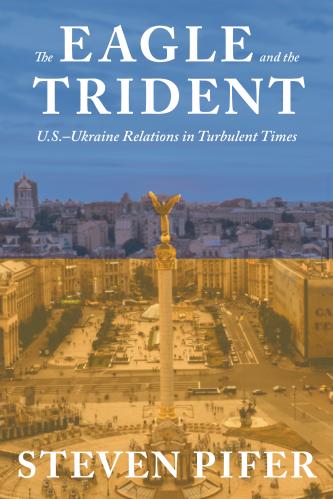
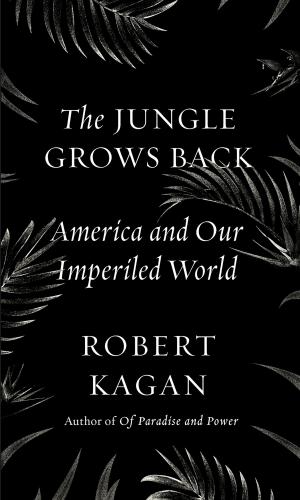
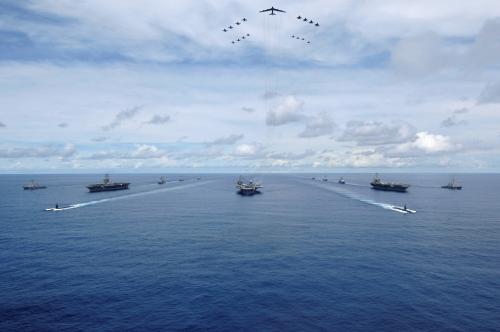


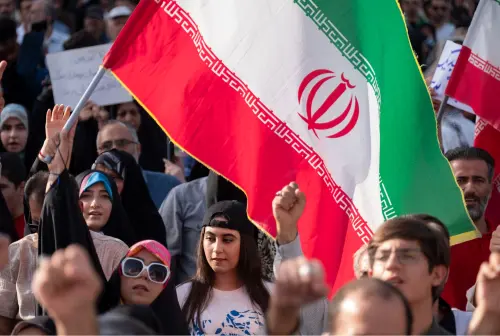
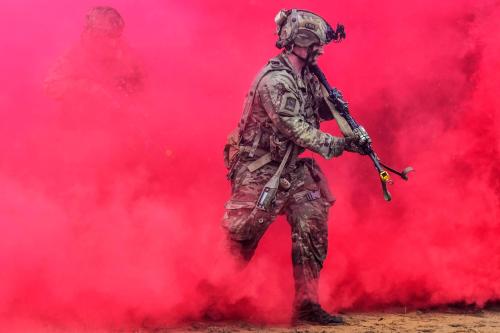
Commentary
Jettisoning arms control endangers America’s edge in great-power politics
July 26, 2019